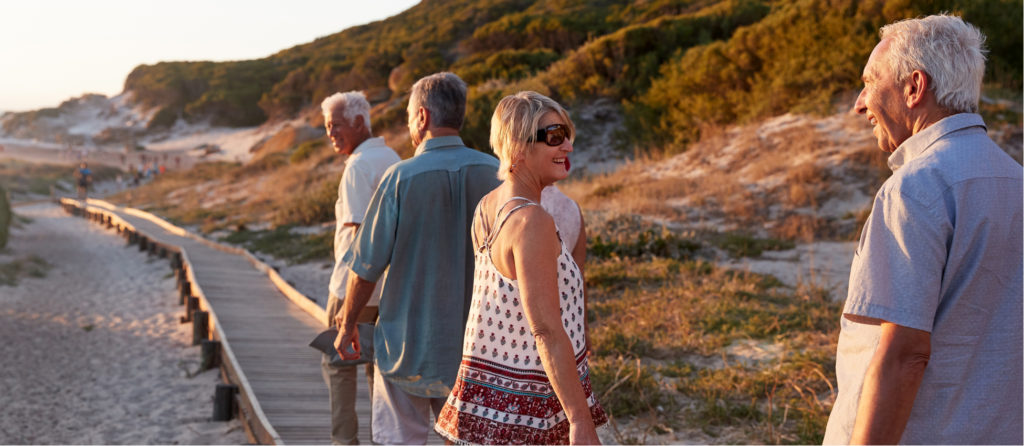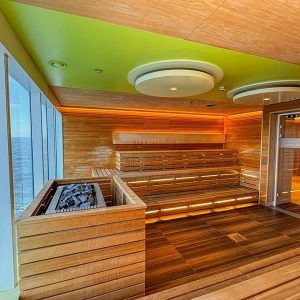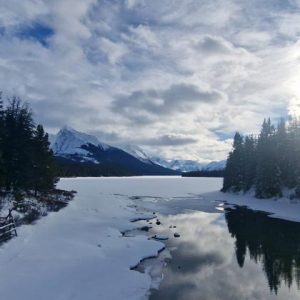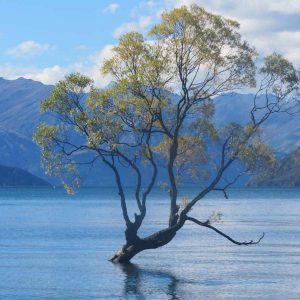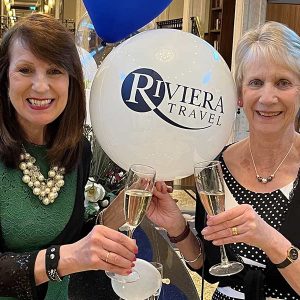Central Asia’s mountains and alpine lakes are magnificent
Comedian Sacha Baron Cohen offended many Kazakhstanis with his satirical film, Borat: Cultural Learnings of America for Make Benefit Glorious Nation of Kazakhstan. But the mockumentary, following spoof journalist Borat Sagdiyev, wasn’t filmed in the former Russian Republic – which is nothing like the fictional location – and actually piqued travellers’ interest in visiting. It’s well worth it.
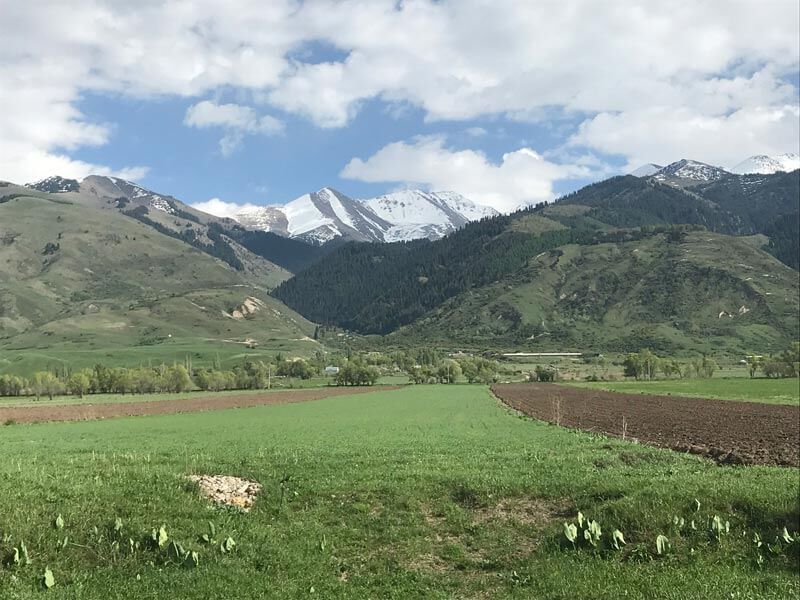 Rich in oil with vast areas of desert and shrubland, Kazakhstan is over a quarter the size of the USA, and has some spectacular scenery, especially along its border with Kyrgyzstan. There are no moustachioed men wresting naked (that I saw, anyway) but fabulous mountain peaks, dramatic canyons and ancient petroglyphs.
Rich in oil with vast areas of desert and shrubland, Kazakhstan is over a quarter the size of the USA, and has some spectacular scenery, especially along its border with Kyrgyzstan. There are no moustachioed men wresting naked (that I saw, anyway) but fabulous mountain peaks, dramatic canyons and ancient petroglyphs.
Joined by tour manager Pippa and 17 other Jules Verne travellers, I flew to Kazakh former capital Almaty (Apple Tree City) via Istanbul. In this modern metropolis in the foothills of the Trans–Ili Alatau Mountains, our group learnt about the country’s ancestral nomadic culture at the Central State Museum. The intricate gold-stitched costume – with regal pointed hat – of the Golden Warrior, whose remains were found in a burial mound dating from the 3rd century BC, takes pride of place and is a symbol of national heritage.
At Panfilov Park, the city was celebrating Victory Day to commemorate the 1945 surrender of Nazi Germany to the Allied Forces. Families were enjoying the sunshine on the Public Holiday and laying carnations on war memorials beside Zenkov Cathedral, an ornate butter-yellow painted wooden church made entirely without nails to protect it in this seismic zone.
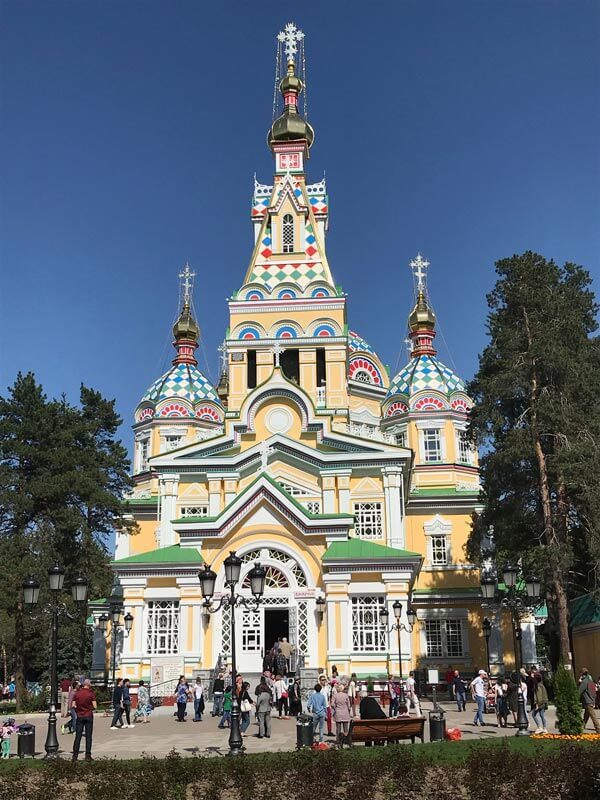 Leaving the humid city behind, we drove to the Medeo Ice Rink, at 1,691 metres above sea level the world’s largest high-mountain skating rink, and took a cable car up to the surrounding powdery white slopes to breath in the fresh air. Skiers sliced by as I negotiated the slush in my sandals, neglectfully unprepared for the vast temperature difference at altitude. (Pack for all kinds of weather, including hat, sunscreen, waterproofs and good footwear.)
Leaving the humid city behind, we drove to the Medeo Ice Rink, at 1,691 metres above sea level the world’s largest high-mountain skating rink, and took a cable car up to the surrounding powdery white slopes to breath in the fresh air. Skiers sliced by as I negotiated the slush in my sandals, neglectfully unprepared for the vast temperature difference at altitude. (Pack for all kinds of weather, including hat, sunscreen, waterproofs and good footwear.)
I did have walking shoes in my suitcase and they were definitely needed for a visit to the Tamgaly Petroglyphs, a UNESCO World Heritage Site in the Tamgaly Gorge, abloom with the Kazakhstan tulips native to this zone. There are over 5,000 rock carvings, including sun-head deities and many long-horned animals, with some sacred images dating back to the Middle Bronze Age. Kazakhstan is sparsely populated but we did meet a group of local schoolgirls on an educational excursion to this arid spot who were eager to try out a few English words.
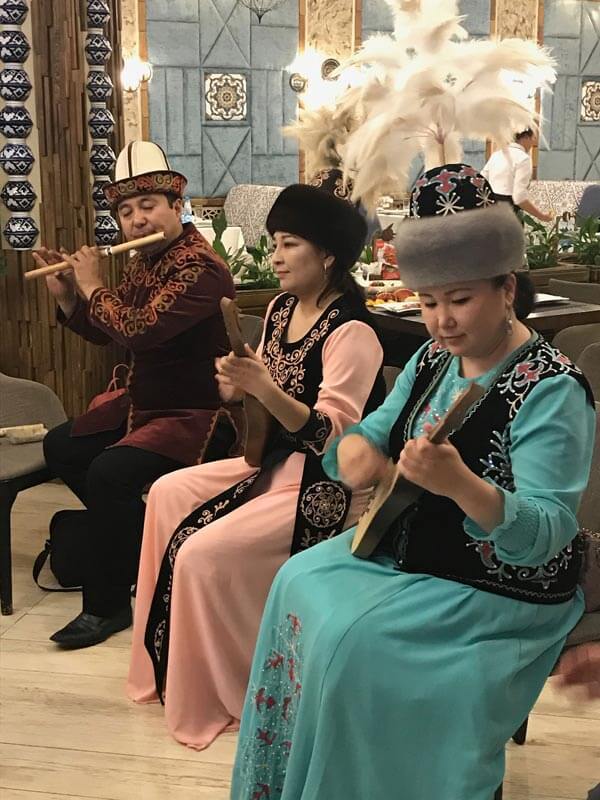 Heading to the Kyrgyzstan border, we passed herds of camels and a string of horses, sheltering in the shadow of a bus stop. Travel can be a little bumpy as road surfaces are gradually being improved – don’t expect the M1 – and be prepared to occasionally use simple hole-in-the-floor earth closet toilets in isolated locations. It’s definitely an adventure.
Heading to the Kyrgyzstan border, we passed herds of camels and a string of horses, sheltering in the shadow of a bus stop. Travel can be a little bumpy as road surfaces are gradually being improved – don’t expect the M1 – and be prepared to occasionally use simple hole-in-the-floor earth closet toilets in isolated locations. It’s definitely an adventure.
In Bishkek, we were serenaded at dinner at the Arzu restaurant by musicians in richly embroidered Kyrgyz costumes with flamboyant plumed hats. The three-stringed komuz, integral to Central Asian music, is made of apricot or juniper wood and is played at speed with amazing dexterity.
Meals in this part of the world often start with soup or salad (lots of cucumber, tomato, onion and red pepper), followed by roast meat, carrots and potatoes or noodles. It’s simple but plentiful, with good bread, and vegetarian options. Fermented horse and camel’s milk are popular drinks – and worth a taste – but I preferred the local beer and green tea.
Leafy Bishkek, gateway to the Kyrgyz Ala-Too mountains, has wide boulevards bordered by irrigation channels to water its thousands of trees. The changing of the National Guard in front of the flagpole on Ala-Too Square is a very formal spectacle, the soldiers in their extra-large peaked caps strutting with very a high goose step in total synchronisation.
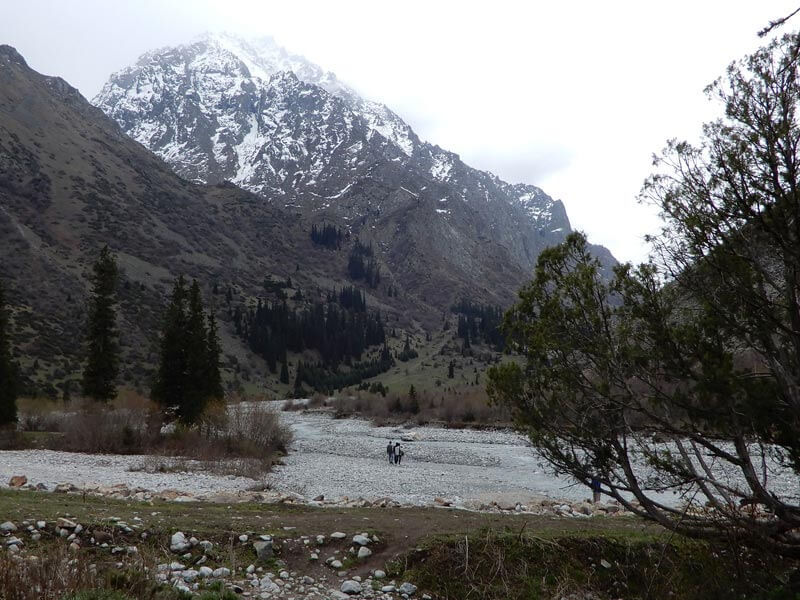 Over 94% of Kyrgyzstan is mountainous and Ala Archa National Park (said to be a favourite of Vladimir Putin’s) is a wilderness with glaciers and wildlife trails. We kept to the main path, passing a few traditional felt yurts, but didn’t spot any elusive snow leopards while sipping a glass of bubbly, chilled in the icy river.
Over 94% of Kyrgyzstan is mountainous and Ala Archa National Park (said to be a favourite of Vladimir Putin’s) is a wilderness with glaciers and wildlife trails. We kept to the main path, passing a few traditional felt yurts, but didn’t spot any elusive snow leopards while sipping a glass of bubbly, chilled in the icy river.
To the east in the Chuy Valley, the Burana Tower, an 11th century minaret, is sited where the ancient city of Balasagun once stood and is half its original height after centuries of earthquakes. Its position, backed by looming snowy crests, is a scenic photographer’s dream.
In the cities, our hotels were modern with an international feel (though with intermittent Wi-Fi and some erratic showers), but two rural overnight stays were memorable. The family-run Ashu Guesthouse in fertile Chon-Kemin valley is decorated in national Kyrgyz style with bright rugs in bold colours on the floor and walls. Its village dining room was a cosy place to watch a thunderstorm roll by and listen to the distinctive call of a brazen cuckoo.
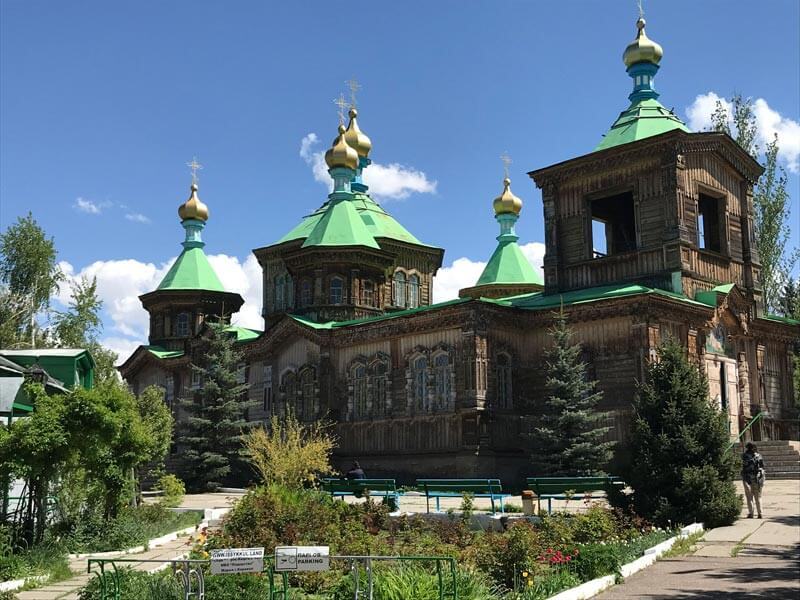 The Caprice Hotel basks in an idyllic location, too, on the shore of Lake Issyk-Kul, an enormous expanse of water which never freezes. Though fed by snow melt, it’s also full of hot springs. We strolled to the waterside at dusk and soaked up the last of the day’s solar rays, sat contentedly at the end of the wooden jetty.
The Caprice Hotel basks in an idyllic location, too, on the shore of Lake Issyk-Kul, an enormous expanse of water which never freezes. Though fed by snow melt, it’s also full of hot springs. We strolled to the waterside at dusk and soaked up the last of the day’s solar rays, sat contentedly at the end of the wooden jetty.
Near the eastern tip of the lake, the city of Karakol, established as an outpost of the Tsarist Russian Empire, is home to the 1895 Orthodox Cathedral of the Holy Trinity. During Bolshevik times, the building lost its onion domes and became a gym and coal store but it’s now been restored, peaceful and scented with beeswax candles.
As our flights home were back from Almaty, we motored back to Kazakhstan, patiently waiting for local cowboys to encourage their herds of cattle and goats to move out of our way. With one last day to sightsee, we couldn’t miss the Big Almaty Lake, a pristine bright turquoise natural reservoir 2,511 meters above sea level. It’s sometimes obscured by mist but on a bright day, it was truly mesmerising.
More information
Jules Verne’s Peaks and Petroglyphs tour to Kazakhstan and Kyrgyzstan costs from £2,145 pp including flights and taxes, transfers, 9 nights’ accommodation, breakfast daily, 9 lunches (packed lunch on Day 4 & 9) and 6 dinners. Visit website or call 020 3131 2520. Departs 14 August, 4, 18 September and 2 October 2019; 6, 27 May and 17 June 2020.
Silver Travel Advisor recommends Jules Verne.
